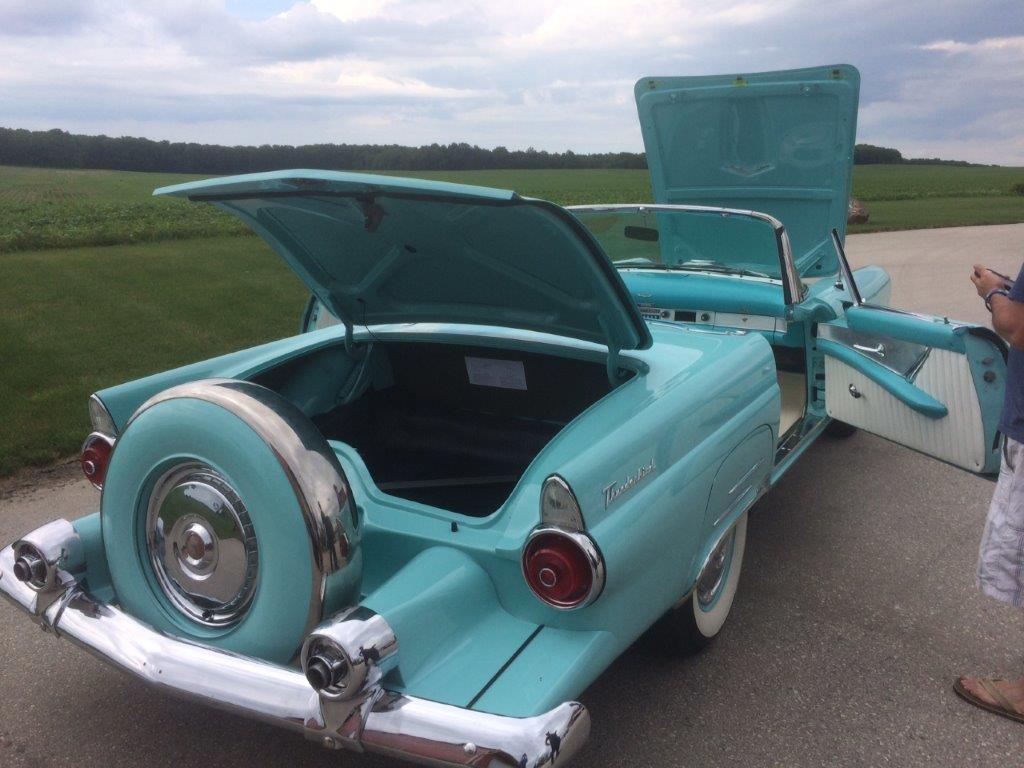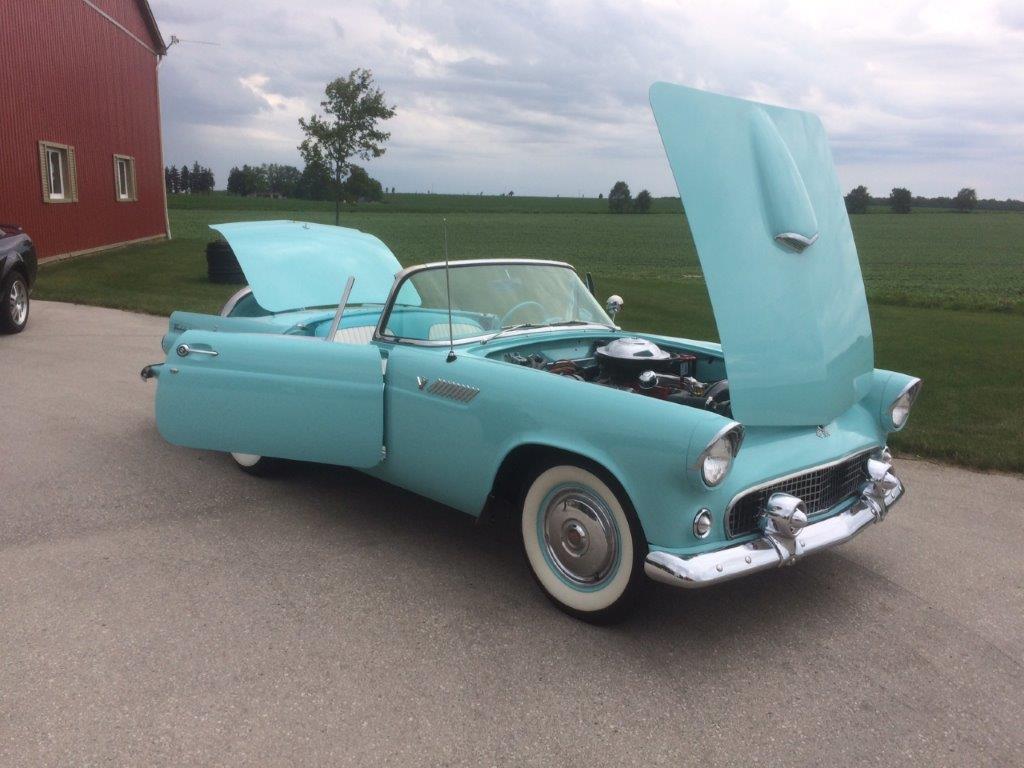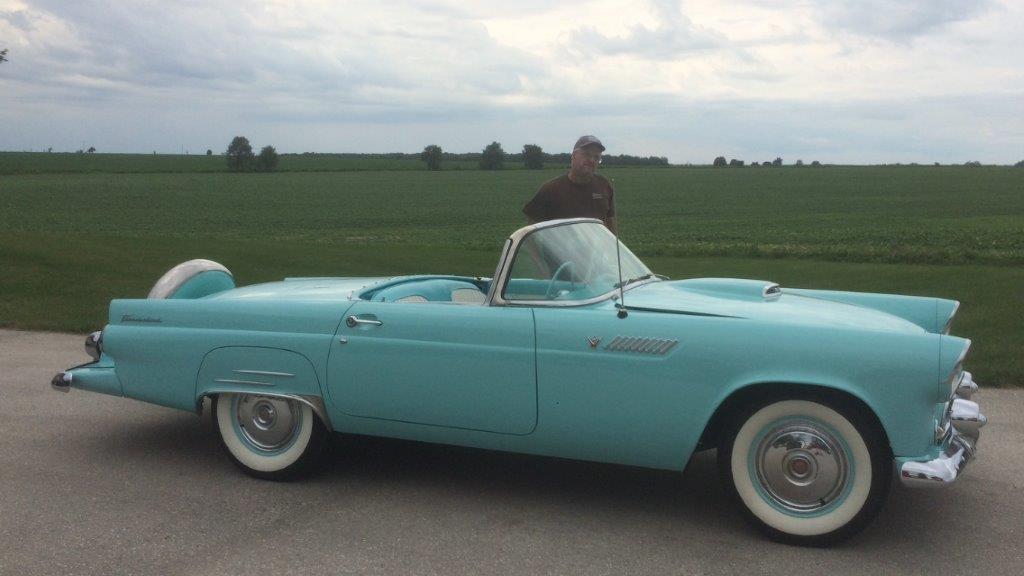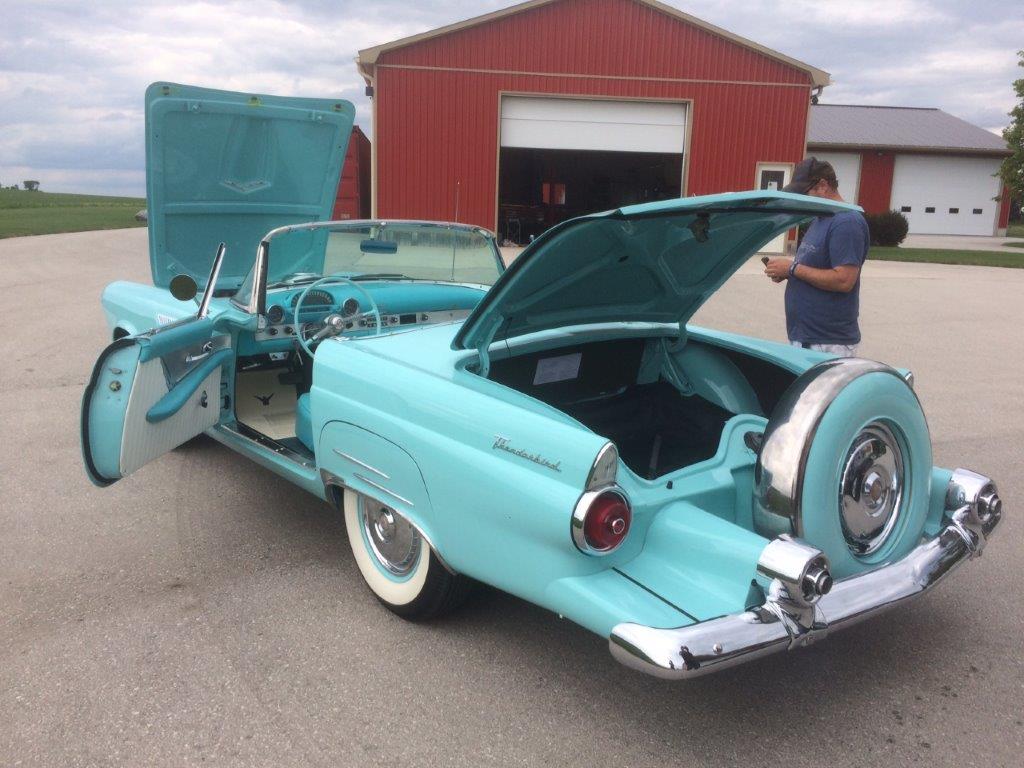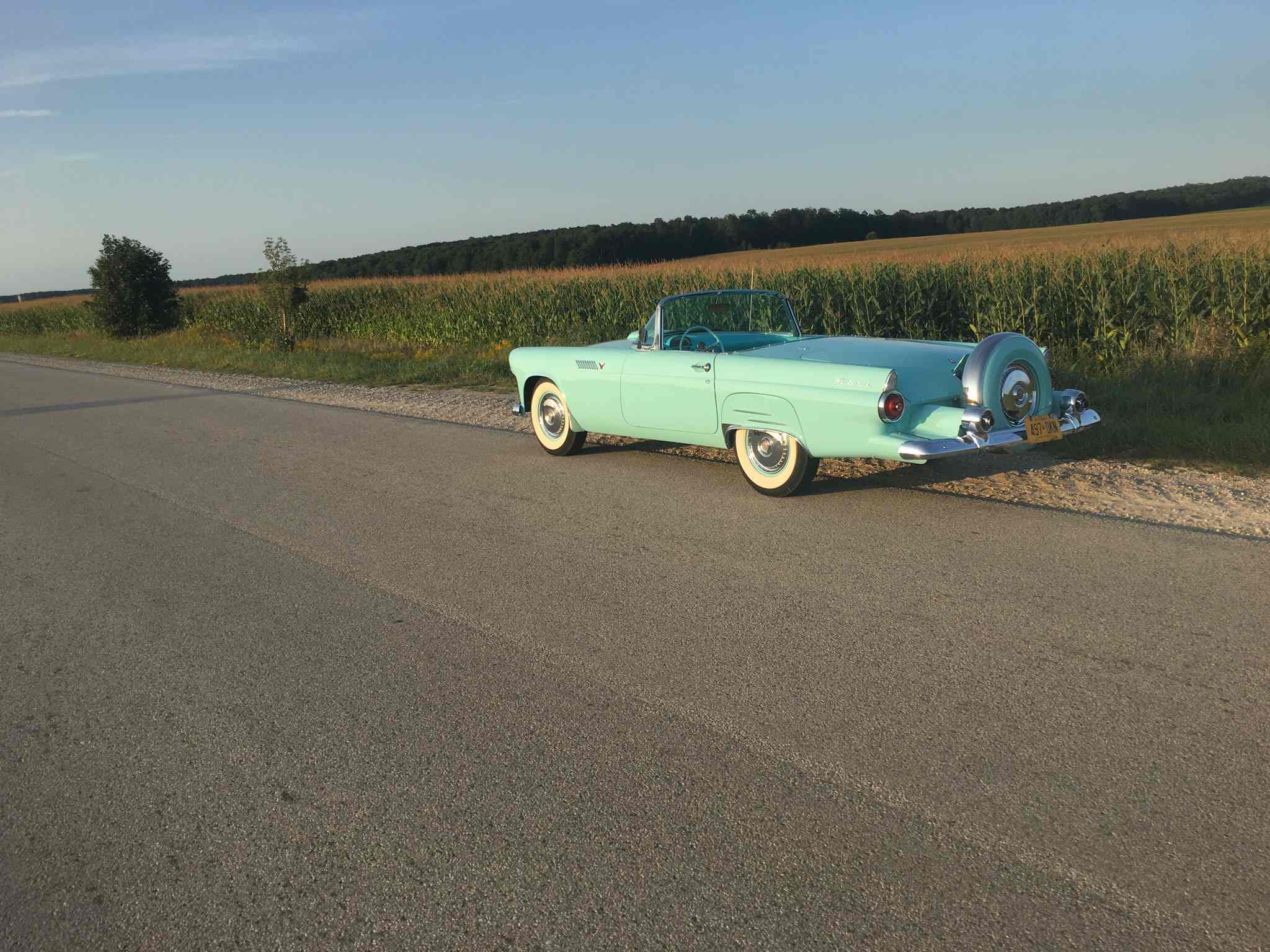1955 Ford Thunderbird NO 18
Engine: 292 cid (4.8 L) Y-block V8 * 193 HP (144kW) @: 4400 rpm Efficiency: 18 mpg
WB: 102 in (2,591 mm) Length: 175.3 in (4,453 mm) Width: 70.3 in (1,786 mm)
Unveiled at the Detroit Armory Auto Show in February of 1954, the first year for the production and sale of the Thunderbird was 1955. Developed in response to the introduction in late 1953 of the Corvette by Chevrolet, Ford decided to go in another direction from GM. Although sharing the same 102” wheelbase as the Corvette, Ford equipped the Thunderbird more robustly with a V-8 engine, roll up windows and an automatic or manual overdrive transmission among other things. The Thunderbird also used existing chassis and suspension designs and off the shelve mechanical parts to keep costs down. It came with fender skirts and glass top standard with a fabric top as an option.
Sales for the initial 1955 model year were brisk. While corporate projections of sales were pegged at 10,000, actual sales topped 16,100 for that first model year.
It is said the Thunderbird marked the introduction to the North American market of the personal luxury car. And although the speedometer read 150 mph to the astonishment of auto fans everywhere, the car was actually able to cruise easily at ONLY 120! But we lived with it!
The Ford Thunderbird
The Thunderbird began life in 1953 in direct response to Chevrolet’s new sports car the Corvette which was publicly announced just a month before. Development of the T-Bird was quick going from idea to prototype in just under a year. Unveiled at the Detroit Auto Show on February 20, the 1955 T-Bird was in dealers showrooms ready for sale on October 22, 1954.
It began production as a sporty two-seat convertible with a detachable fiber-glass top and folding fabric top. Unlike the Chevrolet Corvette, it was not marketed as a sports car. Ford settled the T-Bird as a more upscale model and is credited with developing a new market segment, the personal luxury car (see Buick Riviera, Continental Mark IV, Cadillac Eldorado). Although sharing some characteristics of other Ford models like single, circular headlights and tail lights and very modest tail fins, the T-Bird was sleeker and had a more athletic shape featuring hood scoops and a 150 mph (240 km/h) speedometer hinting at much higher performance than other cars on the road. It was powered by a 292 cid (4.8 L) Y-block that came from Ford’s Mercury Division.
Although usually compared to the Corvette, Ford, billing the T-Bird as a personal luxury car, stressed the car’s comfort and convenience features rather than its sportiness. Although sharing the Corvette’s 102 “ wheelbase, the T-Bird seemed bigger and stressed more luxury with roll up windows and V-8 power, all features unavailable to Corvette owners early on. The T-Bird outsold the Corvette by more than 23 to 1 in the 1955 model year. The few changes that were made for the 1956 model included the addition of porthole windows as standard in the removable 85 pound fiberglass roof in order to improve visibility and a 312 cid (5.1L) Y-block V8 making 225 hp (160 kW) when mated to a Ford-O-Matic 2 speed automatic transmission. The spare was also moved to a Continental Kit on the back of the car but this upset the balance of the car and that design feature was lost when with the 1957’s models.
“The Thunderbird was revised for the 1957 model year with a reshaped front and rear bumpers, a larger grille to aid cooling, subtle tailfins, larger tail lamps and a lengthened trunk to again incorporate the spare inside but left room for luggage. The frame was beefed up to handle the longer body and smaller 14” wheels replaced the previous 15” wheels. The `57 Bird was powered by the single 4-bbl-carburated D-code 312 cid Thunderbird Special V-8 which made 245 hp at 4,500 rpm and 332-lbs-ft of torque at 3200 rpm.
The instrument panel was heavily re-styled with round gauges in a single pod, and the rear of the car was lengthened allowing the spare tire to be positioned back in the trunk. The 312 cid engine became standard and now produced 245 hp (183 kW). Though Ford was pleased to see sales rise to a record breaking 21,380 units for 1957, company executives felt the car could do even better, leading to a substantial redesign for this First Generation of Thunderbirds to the Second Gen T-Birds, the so called “Square Birds” of 1958-1960.
From its introduction in 1955 to its phase out in 2005, Ford produced over 4.4 million Thunderbirds. The Second Generation, the so called “Square Birds” (1958-60) may have sold more cars but that First Generation of Thunderbirds (1955-1957) will always hold a special place in collector’s hearts as the “Best of the Flock.” We are lucky to have these two wonderful examples of these early Birds here in the Lang Collection for you to appreciate.

